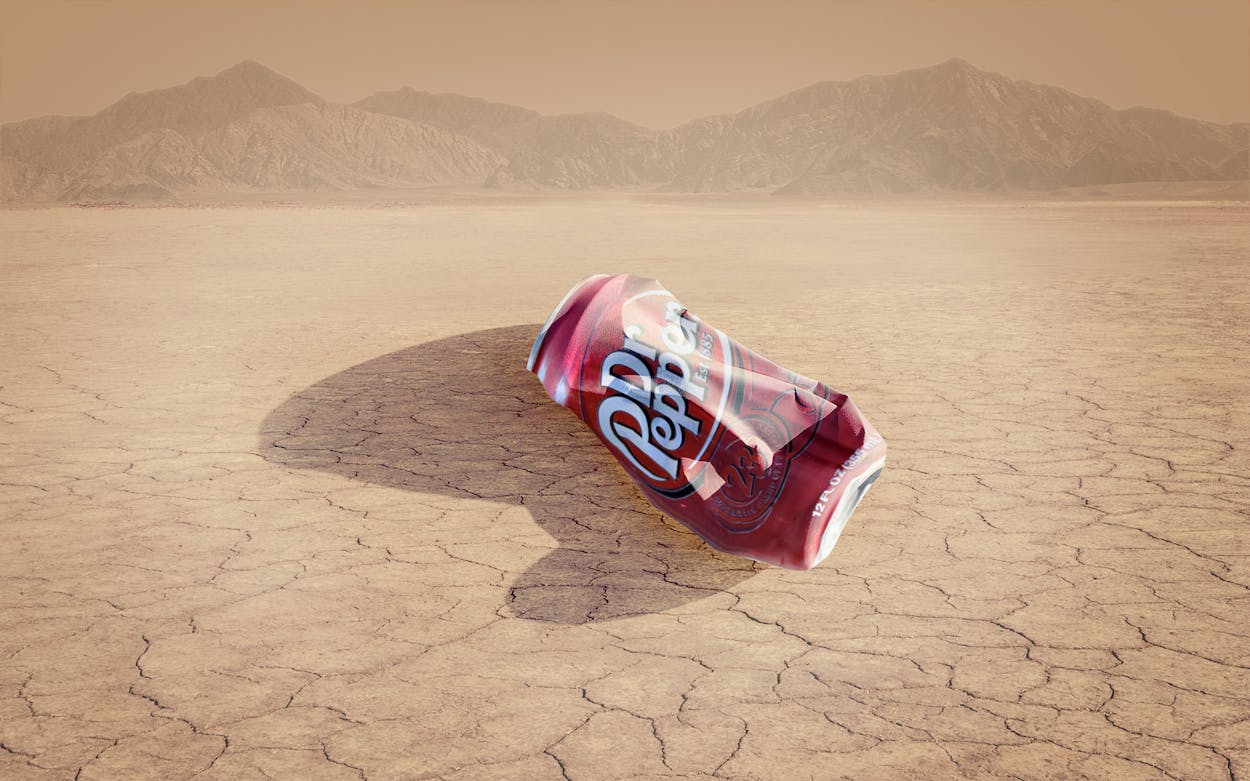One of the ways that the emotional roller coaster of 2020 has manifested itself has been in product shortages. Need toilet paper? Sorry, it took months for supply to get back to normal. Want to work out? Through the spring, kettlebells and weight benches were available only on the black market. Basics like flour and yeast took their turns being the hot, sold-out product of the moment, and during the Animal Crossing furor of the months of the pandemic, Nintendo Switches were being stockpiled like cigarettes in prison. Bikes and aboveground pools are still scarce, as summer begins its (extremely) slow transition into fall. Even jigsaw puzzles, the hot ticket home entertainment of the 1930s, disappeared from retailers’ shelves.
The latest product to get swept into scarcity by These Times, though, is one Texans tend to hold very close to our hearts: Dr Pepper, the beloved soft drink that was invented in Waco in 1885 and for more than a century was bottled in the small Central Texas town of Dublin (it was eventually acquired by Keurig in 2018), is now on the watch list for product shortages. The company itself acknowledged the very serious problem in a tweet on Monday:
We know it’s harder to find Dr Pepper these days. We’re working on it – hang tight!
Note: This applies to all flavors of Dr Pepper – including our newest permanent addition to the family, Dr Pepper & Cream Soda. pic.twitter.com/Kf0UedMuiw
— Dr Pepper (@drpepper) August 10, 2020
According to USA Today, the shortage can be traced to the aluminum can industry, which wasn’t prepared for the huge demand for canned drinks after restaurants closed and people had to satisfy their soda cravings at home. Other soda and beer companies, such as Molson Coors and Coca-Cola, have faced similar issues.
Because there are other, more pressing concerns in the COVID-19 era, complaining about a shortage of your favorite soft drink feels maybe a wee bit tone-deaf. So we won’t complain, specifically, about Dr Pepper, but we will take just a moment to recognize that it was nicer before, when we lived in a version of America where we never had to worry about things like Dr Pepper shortages. A potential run on Dr Pepper is less about the soft drink than it is a bright maroon symbol of what it is like now, living in a country where it’s not safe to visit our families, our doctors and nurses are stretched to the breaking point, 160,000 people have died from a disease that the U.S. has proved uniquely incapable of containing, and our economic future looks more uncertain by the moment. We were a different country not that long ago, one where the idea that our supply of a consumer product as ubiquitous as Dr Pepper could run out felt as absurd as saying, I dunno, it wouldn’t be safe to eat at a restaurant anymore, or the Big Ten wasn’t going to play college football this fall.
This too shall pass, of course, and there is reason to be optimistic that at some point in the not-too-distant future—when, it would be foolish to guess—we will find ourselves living once more in an America in which supermarket shelves stocked with Dr Pepper can again be assumed as the birthright of everyone born within its borders. Maybe they’ll even get the supply issues worked out sooner than that, and we can leave behind the apocalyptic worry that each can of Dr Pepper we open may end up being our last. That’d be nice! For now, though, it’s just another reminder that we live in uncertain times, and even Dr Pepper doesn’t have the cure.
- More About:
- Libations








